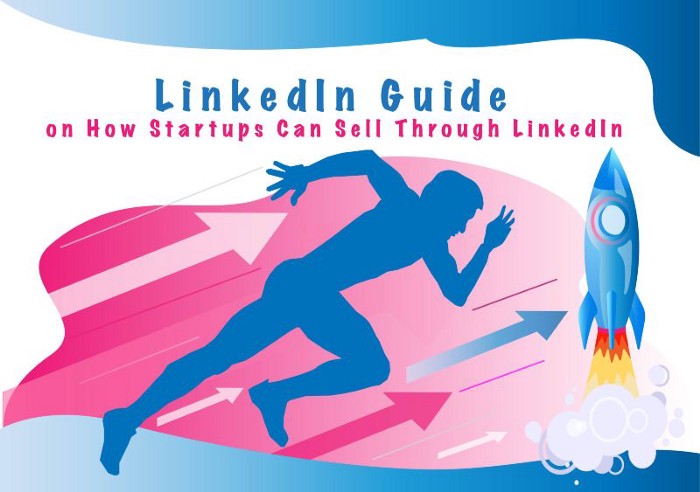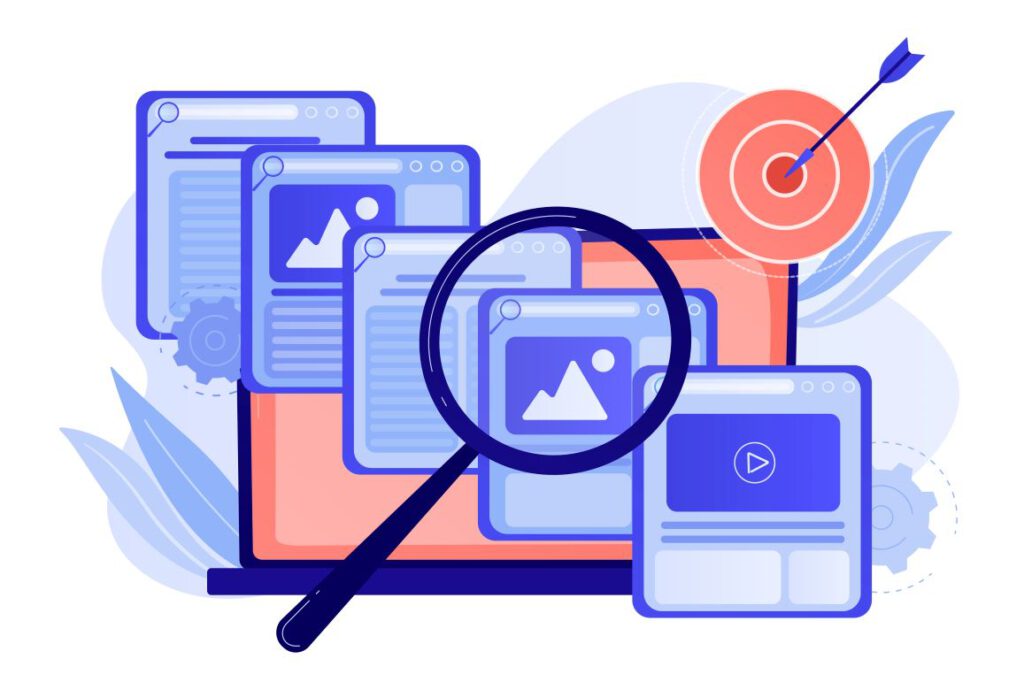LinkedIn Guide for Startups on How To Sell Through LinkedIn

When it comes to making sales, LinkedIn’s role is unquantifiable. So, one might wonder, how big of a role does LinkedIn play? Well, research has shown that at least 89% of top sales professionals use LinkedIn as a crucial and handy tool to secure the bag.
Interesting, isn’t it? Without having a profile that speaks for itself, do you think sales will be made so smooth? Absolutely not! Another research that experts carried out says that at least 82% of your visitors and target audience will review and judge your LinkedIn profile before agreeing to meet or connect with you. Not fair? So is life -buckle up!
These prospects will judge virtually everything on your profile. From your work experience to profile picture, to your skills section, summary, education, shared connections, etc. You name it! It will all be scrutinized.
Your potential buyers will either choose to patronize or decline your connection and the chance to meet you in person based on how your profile is curated.
If you’re in search of how to turn the tables around and convert that deals-especially as a new seller on LinkedIn, then you should know that you’ve come to the right source. Discover the best methods to scale your startup and improve your sales processes accurately on LinkedIn. As tricky as sales may sound, there is a lot of ability to it. In this LinkedIn Guide for Startups, we will instruct you on how to convert prospects to customers.
Before we dive into unleashing those strategies, let’s be sure that you’re conversant with the term sales prospecting. We will then tell you what every entrepreneur needs to know when starting a business on LinkedIn and then selling as a newbie on LinkedIn right after that.
The LinkedIn Guide for Startups
What is Sales Prospecting?
Sale prospecting is simply the act of filtering several businesses and individuals to discover those that are likely going to be converted into beneficial customers for your business with little or no effort. Mind you, and it is not a quick-fix strategy. Instead, it is one strategy that requires patience and commitment to achieve the desired results. The first action to accomplish this is to know where you should be looking for these customers.
Generating sales have taken a different approach compared to what it used to be. All thanks to the advancement of technology.
Today, nearly two-thirds of the entire B2B buyers worldwide decide based on the brand’s content that they want to patronize. Therefore, to succeed on LinkedIn as a new seller, you need to understand and predict how these online buyers behave.
The way it’s been from time immemorial is that when a buyer needs to make a purchase, they will contact salespeople for inquiry before they decide to further or step back. But gone are those days! Instead, we find ourselves in a digital environment that has taken care of stressful and lengthy processes.
To quickly sell and convert with LinkedIn as a new seller, the following tips should be read and practiced daily.
What every business owner needs to know
As a business owner trying to set up a business online and expand overseas, some of the common challenges that one could face include when and how to enter the market. So let’s say, for instance, that you’re in the Netherlands and you want to penetrate the US market that we all know is large and dynamic; how do we go about it is the big question.
Penetrating a market like that of the United States is tasking because it constantly requires innovation. Therefore, any company or brand that can meet its demands stands a higher chance of securing scalable revenue growth. But moving too fast and unplanned during such an aggressive market can cause you to miss out on that opportunity.
Even business owners who reside in the US can also fall short if they aren’t properly grounded with adequate information to kick start their business.
The LinkedIn market is quite different from the market you know in real life, so you cannot expect the exact strategies to work perfectly on LinkedIn.
Most business owners are concerned with how fast they can penetrate the market and make sales without asking basic questions to know if their company is ready to take on such a challenge and if their product will fit into the new market on LinkedIn. If you don’t ask the right questions and do the necessary feasibility study, you might have difficulties that might reduce your chances of succeeding on LinkedIn.
The following tips will help you prepare for whatever market that you intend to penetrate on LinkedIn. It will also let you gain new customers faster.
1. The timing has to be right
Timing is everything, in case you’re not aware. This applies to everything we do within and outside the business. Without jumping into a market at the right time, your business efforts may be swept with the flood. So before you target other international markets on LinkedIn, ensure you’ve gotten a solid ground on your home base that you can always fall back to.
It is also advised that you do a test run of the product in a medium-sized market before going for the bigger fish.
There are two dominant strategies that most experienced brands use whenever they try to penetrate a new market. Those strategies are called seeding and soloing.
We’ll explain both in a bit!What is Seeding?
Seeding is defined as a technique that most brand owners use to understudy several ways to penetrate a new or foreign market by simply taking note of what others have done or are currently doing to succeed. Unfortunately, most times surveying from the outside might not be clear enough, and that is where most of these business owners tend to seek advice from experts that are well-grounded to come to their rescue.
What is Soloing?
On the other hand, Soloing can be defined as the strategy most managers use to learn about a foreign market through several experiments. If their survey proves beneficial, it could be adopted and improved over time by these business owners.
This strategy is time-consuming, and there’s no guarantee that you will understand how it works the first time you try. So you have to keep pushing until you win. Also, this is one hell of a risky strategy, but as a business owner, you should welcome such risks. What you need to have at the back of your mind is that at the end of the day, it’s undoubtedly going to pay off!
2. Choose your team carefully
Here, you need to be more cautious and choose quality over quantity. As a newbie trying to either set up a Startup on LinkedIn or penetrate a new market, it can be tempting to hire many marketers both on and off LinkedIn.
Ensure that you don’t hire team managers who understand only the local markets and the international business; it will go a long way to help your brand generate sales. Most companies with quality and efficient management teams tend to apply more of the seeding technique than the soloing technique. And this is because it has proven more successful over time.
3. Try the methodical approach
To better understand this strategy, you first need to know that every product is unique — and so its journey. The same applies when a brand tries to set up a business or penetrate a new market on LinkedIn. But, regardless of the fact, they both have in common to undergo similar phases when the idea emanated to success.
You have to continually review your progress to know where business is at every point in time, as it will help you make better decisions. Learn to focus on the right task at the right time too.
By the following testing, learning, validating, and measuring methods that have proven to be successful over time will help you know when you’re set to take your business to another level.
4. Ensure your product fits the market
Every business owner should know that people won’t patronize your product or service if it doesn’t solve a problem. Let’s assume your brand is doing well with the local market on LinkedIn but is seeking new ways to penetrate a more significant and more unknown market on LinkedIn. The first question that you need to ask is, will it provide the same quality service for the newer and bigger market? Then also, as a newbie trying to gain entrance, you need to ask yourself if you can efficiently solve and satisfy your customers. Suppose the answer is yes, then congratulations to you because your product fits the market. If you’re willing to succeed on LinkedIn as a Startup owner, you must understand how well your business works in the market you enter.
The following reasons are why you need to be 100% sure your product is good enough to join the race.
- Nothing is guaranteed. You might know the people you are looking out for as your target audience but what you aren’t sure of yet is who your customers are and how your product will efficiently meet their needs.
- The second reason is that no market or product can be set aside as the best. Lots of trial and error involved.
Ensure your product excites your prospect to the point where you strive to get it, rather than them contemplating if they need it or not. A ‘must-have’ type of product will inspire them to come back for more. Only then can you say you’ve penetrated the market enough.
5. Ensure distribution channel is not broken
So you have gone through the phases that certify that your product is good enough for your potential prospects, but the means of distribution isn’t quite right. To get rid of this problem, you need to learn how to market your solution correctly. Those trying to set up a business or penetrate a new market on LinkedIn may find marketing difficult in the initial stages. Still, once you understand and succeed at it a few times, the rest will become history.
The following tips will help business market your business better;
- Understudy your competitors and find out how they solve their customer’s problems/complaints.
- Criticize your product
- No matter how good your product is, never assume it’s the best.
These are some of the critical things that every business owner willing to sell on LinkedIn should have at their tip while getting set to make that bold move on LinkedIn. The known quote, “if you fail to plan, then you have planned to fail,” better sums it up. To bypass narrating stories that touch the heart, be familiar with these familiar marketing strategies to help you build your hypothesis regarding your prospects. Validation is another thing that you will need to do as the series of hypothesis tests will help you evaluate your product and know when it’s ready to scale the new market on LinkedIn. All things being equal and you get your hypothesis right will allow you to set the standard to follow. But then you need to research new ways to improve what you already have constantly; otherwise, you may find yourself making the identical thing over and over again.
If your hypothesis is correct, it allows you to build the first version of a market playbook for the US market.
Scaling is about testing, measuring, and pivoting the market playbook you created during the Validation to scale in the US.
How to sell on LinkedIn as a Startup on LinkedIn
Marketers that have made impressive record sales with the help of LinkedIn call it the goldmine network. Below are four key strategies that will help you tap into that goldmine.
1. Build a solid digital brand with the help of your LinkedIn profile
The first step to achieving greatness is by optimizing your profile to the point that it’s not only complete. Still, it has a professional and impressive general overlook for everyone that surfs through it.
Some people create a LinkedIn account only when they need to use it for a purpose, and then they’re off. If you’re among them, it’s time to have a rethink and set it up for sales.
To ensure your profile is optimized for success, the following are essential;
- Ensure your profile photo is professional. Looking at the part is necessary!
- The next thing that you will need to do is make sure that your headline communicates value. Give your prospects a hint of what they will benefit from connecting with you.
- Constantly update your profile with recent awards, fresh content, endorsements, and so on.
2. Keep your ears on the ground
Stay curious about the latest happenings in your industry. Again, please pay close attention to the newsfeed of others and closely observe those you have established a connection with to see what they are doing differently. Search for prospective buyers and try to know more about their backgrounds. Also, be on the lookout for an opportunity to reach out to them.
3. Connect with prospect
The journey of a thousand miles starts with the first action. We know this isn’t’ easy for most people to do because one can spend a lot of time attempting to establish connections with prospects but then get little or no response. So take that bold step and grow your network. In the start, this might be hard, but the more your connection grows, the easier it is to establish connections and make sales.
4. Strengthen your rapport with prospects
The biggest mistake that most LinkedIn users make is establishing valuable connections and not maximizing their potential. Always stay in touch with those you have connected to ensure that your relationship with them is constantly strengthened. And this is because those that you’ve connected with are more likely to remember the conversations with you when you’re active in publishing content.
Some of the ways that you can strengthen your relationship with your prospects include;
- Show appreciation by replying to comments and sharing some of their content on your feed.
- Acknowledge their accomplishment. It will give them the encouragement that they need to strive for more. It’s also a move that will keep you in their good books.
- Send personalized messages to your contacts to congratulate them on their work anniversaries or other accomplishments.
- Learn to move from exchanging messages to set up physical meetings with them over time. But endeavor to do a little background study of the person that you want to meet up with. What you don’t want is to appear and talk only about business. It would seem as though it is the only reason why you tried to connect in the first place. Find out their interest, team, company, etc., it will serve as a good conversation starter and talking point.
LinkedIn Guide for Startups Additional Tips To Remember
Now that this LinkedIn Guide for Startups is done arguing about the four essential strategies that can help you generate sales. Below are some bonus tips that will also help you sell fast on LinkedIn.
1. Work smarter, not harder
The days are gone when people worked hard with their bodies before generating revenue for their business. People now work more with their brains and less with their bodies and generate two to three times more than people who used their bodies. So all you need to do is focus on the right people and companies that are more likely to patronize your business and sell to them.
2. Practice the ABC rule of thumb
ABC stands for Always Be Connecting. Having talked about the essence of connecting earlier on, we already guess you know why this is important. In today’s market, networking has contributed to over 90% of the success that salespersons experience both social media platforms like LinkedIn and in real life. Have it at the back of your mind that people are more likely to buy from those they like and trust. That is why you need to put in the work to connect and build a rapport with your prospects.
3. Lead with insights
In today’s market, most buyers have a high expectation from salespersons, and there no way to convince them that you’re the one they have been looking for other than to lead with insights. By doing so, you will create a better avenue for your prospective buyer to want to meet and do business with you. So put in the work and impress your prospects with insight, and they will always come back to do more transactions.
4. Ask meaningful questions
Find and join LinkedIn groups related to your business to stay current with any relevant discussions with group members. LinkedIn groups will also allow you to connect with prospects to learn how they operate their business and what they care about. Don’t wait for others to publish content (Here you can find the LinkedIn and Facebook Auto-Poster to get massive outreach) before you join the conversation. On your own, search for relevant industry publications and share. It’s not a crime if others learn from you.
5. Create an excellent buying experience
It is easier to have an old customer return and do more deals than to get new ones. A straightforward way to do this is by creating a pleasant experience with every client that patronizes your business. It is one tactic that will help you generate more sales.
This is one strategy bound to work but may rebound force-feeding an agenda to prospective clients. Instead, ensure you’re always working according to your buyer’s agenda, objectives, and timeline.
CONCLUSION
The information they say is power. In a time where things appear to be happening at the speed of light, if not informed enough, your brand might be struggling on the verge. The more informed you are, the greater power you have to regulate the sales process.
Get off the verge of failing in your business by building a solid business rapport with decision-makers in the sales pipeline of every organization that you have targeted.






Responses